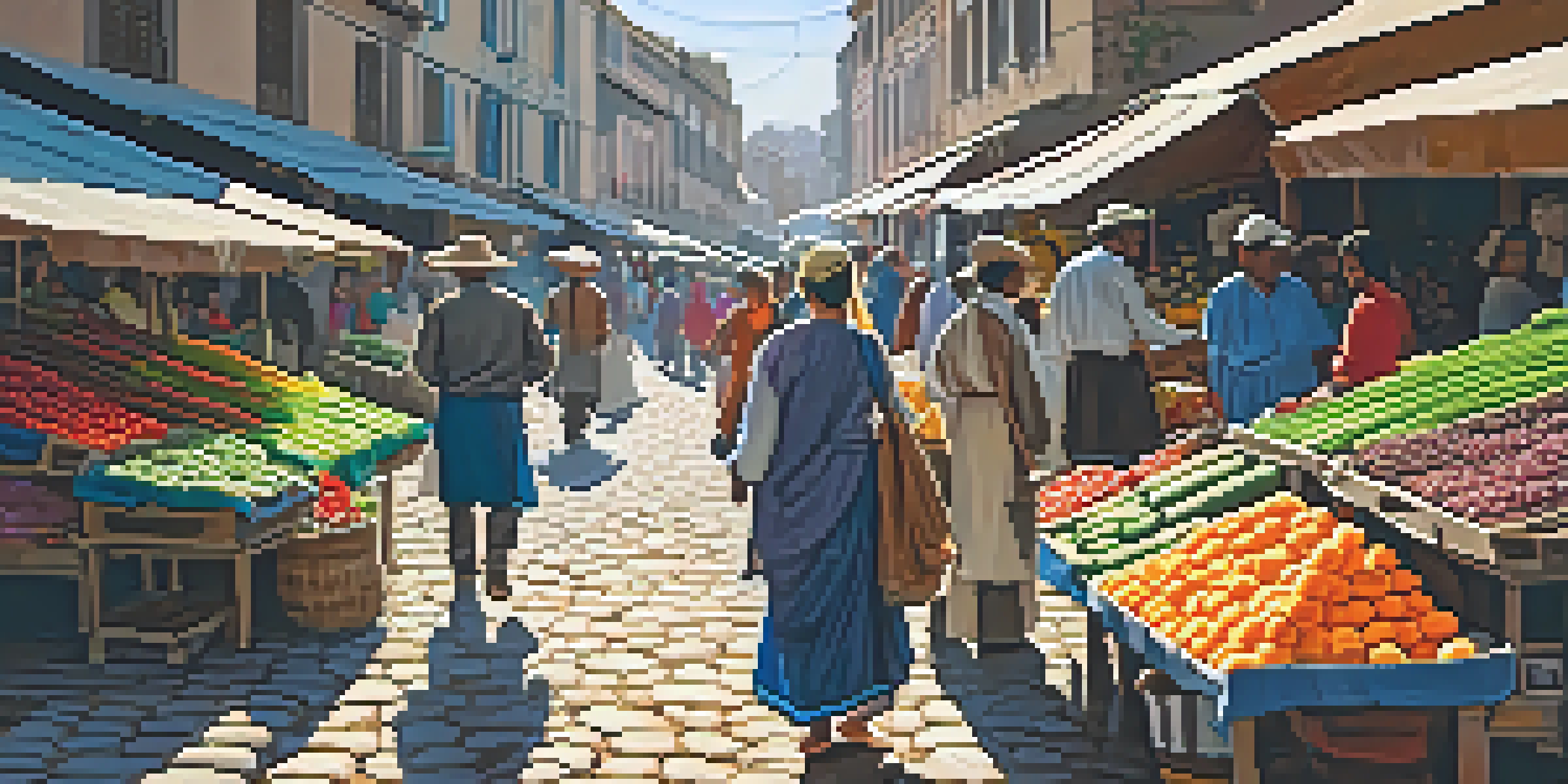Respecting Cultures: Ethical Travel Photography Guidelines

Understanding Cultural Sensitivity in Photography
Cultural sensitivity is about recognizing and respecting the traditions and values of different communities. When photographing a culture different from your own, it’s crucial to understand that certain practices may hold significant meaning. For instance, capturing a sacred ceremony without understanding its context can lead to disrespect and misrepresentation.
Photography is a way of feeling, of touching, of loving. What you have caught on film is captured forever... It remembers little things, long after you have forgotten everything.
An anecdote to illustrate this point: imagine attending a wedding in another country and snapping photos of intimate moments without permission. This can make the participants feel uncomfortable or objectified. By being aware of cultural sensitivities, you can approach your photography in a way that honors the people you are capturing.
Ultimately, cultural sensitivity fosters trust and connection, allowing you to create more meaningful and authentic representations in your travel photography.
Seek Permission Before You Shoot
One of the most important ethical guidelines in travel photography is to always seek permission before taking someone's photo. This practice not only shows respect but also builds rapport with the community. For example, asking a local artisan if you can photograph them at work can lead to a richer interaction and possibly even stories behind their craft.

Without asking, you risk intruding into personal spaces and moments that people may wish to keep private. Imagine capturing a candid moment that someone later feels uncomfortable about; this can lead to feelings of exploitation. Therefore, asking first can transform a simple photo into a shared experience.
Cultural Sensitivity is Key
Understanding and respecting the traditions of different communities is essential for authentic photography.
Additionally, some cultures have specific customs regarding photography, and seeking permission ensures that you are aware of and respecting those customs.
Respect Boundaries: Know When Not to Photograph
Just as important as asking for permission is understanding when not to photograph. Certain events or sacred places may have strict rules against photography. For instance, many religious sites request that visitors refrain from taking pictures to maintain a sense of reverence and privacy.
The camera is an instrument that teaches people how to see without a camera.
Imagine visiting a temple where the atmosphere is serene, and the community is engaged in prayer. Capturing these moments without consent can disrupt the sanctity and peace of the environment. By respecting these boundaries, you demonstrate that you value the experience and the people within it.
Always research and observe the norms of the places you visit. If you are unsure, it’s better to err on the side of caution and avoid taking photos.
Cultural Representation: Avoid Stereotypes
When photographing a culture, it’s vital to avoid reinforcing stereotypes. Stereotypes can lead to a one-dimensional view of a rich and diverse culture. For instance, showcasing only the traditional attire of a community might neglect the modern aspects of their lives, leading viewers to form a narrow understanding.
Consider the story of a photographer who only captured images of tribal ceremonies, neglecting the contemporary lifestyle of the community. While these ceremonies are beautiful, they do not represent the entirety of the culture. Strive for a balanced portrayal that encompasses both traditions and modern-day life.
Always Ask for Permission
Seeking permission before photographing individuals fosters respect and builds rapport within the community.
By representing cultures authentically and diversely, you contribute to a more nuanced understanding of the people you photograph.
Sharing Your Work Responsibly
Once you have captured stunning images, it’s essential to share them responsibly. This means giving credit where it’s due and being mindful of how your images may be interpreted. For instance, sharing a photo with a misleading caption can perpetuate stereotypes or misrepresent the culture.
Imagine posting a photo of a local market but captioning it with a focus on poverty. This not only disrespects the vibrant culture but also diminishes the hard work of those involved in the market. Instead, highlight the beauty and richness of the experience to foster appreciation.
Ultimately, sharing your work responsibly can promote a deeper understanding of the culture and encourage others to approach travel photography ethically.
Educate Yourself About the Culture
Before traveling, take the time to educate yourself about the culture you’ll be photographing. Understanding the history, values, and norms of a community can significantly enhance your photography experience. For instance, knowing the significance of certain symbols or rituals can help you capture them more meaningfully.
Consider the difference between a tourist snapping photos without context and a photographer who understands the cultural implications of what they are capturing. The latter will likely create more impactful and respectful imagery. Research can help you avoid unintentional offenses and deepen your connection with the community.
Educate Yourself About Cultures
Researching a culture's history and values enhances your photography and helps avoid unintentional offenses.
In essence, education paves the way for meaningful interactions and photographs that tell authentic stories.
Embrace the Stories Behind the Images
Every photograph has a story, and embracing these narratives can enhance your travel photography. Engaging with your subjects, asking them about their lives, and sharing their stories can transform a simple photo into a powerful testament to their culture. For example, a portrait of a local farmer becomes more meaningful when accompanied by their story of resilience and tradition.
Imagine capturing an image of a dancer mid-performance, but without understanding the dance's cultural significance. By learning about that significance, you can add depth to your image and share a more comprehensive narrative with your audience. This approach not only enriches your work but also honors the people you photograph.

Incorporating stories into your photography fosters connections and allows viewers to appreciate the culture beyond just the image.